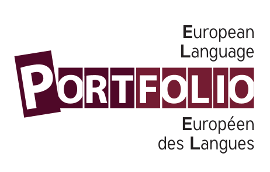History of the ELP project
In view of the large number and wide range of validated and registered models now available, the Council of Europe stopped registering ELPs at the end of 2014. The website will continue to provide all the necessary resources for compiling ELP models, which in future will be the sole responsibility of developers. These resources include descriptors of language proficiency at all CEFR levels and for different age groups, templates of various kinds, and step-by-step guidelines.
The Common European Framework of Reference for Languages (CEFR) provides tools for the development of language curricula, programmes of teaching and learning, textbooks, and assessment instruments.
The European Language Portfolio (ELP) is designed to mediate to learners, teachers and schools, and other stakeholders the ethos that underpins the CEFR: respect for linguistic and cultural diver-sity, mutual understanding beyond national, institutional and social boundaries, the promotion of plurilingual and intercultural education, and the development of the autonomy of the indi-vidual citizen.
The documents proposed below offer an overview of its development, its story and the work of the European Validation Committee, as well as the impact of the ELP on language learning and teaching.
The European Language Portfolio: the story so far (1991-2011): a history of the ELP by David Little, Francis Gouillier and Gareth Hughes (members of the Validation Committee, 2001-2010)
The European Language Portfolio: an impact study (2009): a survey of the impact of ELP models in a representative sample of European countries and educational contexts by Maria Stoicheva, Gareth Hughes and Heike Speitz (members of the Validation Committee)
Co-operation with the European Union: Europass
Versions of the ELP have been created for learners of all ages in all education sectors in a great many Council of Europe member states. One of the three components of the ELP, the language passport, is part of the Europass scheme. The electronic version of this document was developed by the Language Policy Programme and CEDEFOP, the body in charge of Europass for the European Commission.
One of the other Europass documents (there are five in all) is the Curriculum Vitae, in which citizens are invited to indicate their linguistic competences in terms of CEFR levels.
Language Policy Portal
www.coe.int/lang
European Centre for Modern Languages
(ECML) - Graz, Austria



